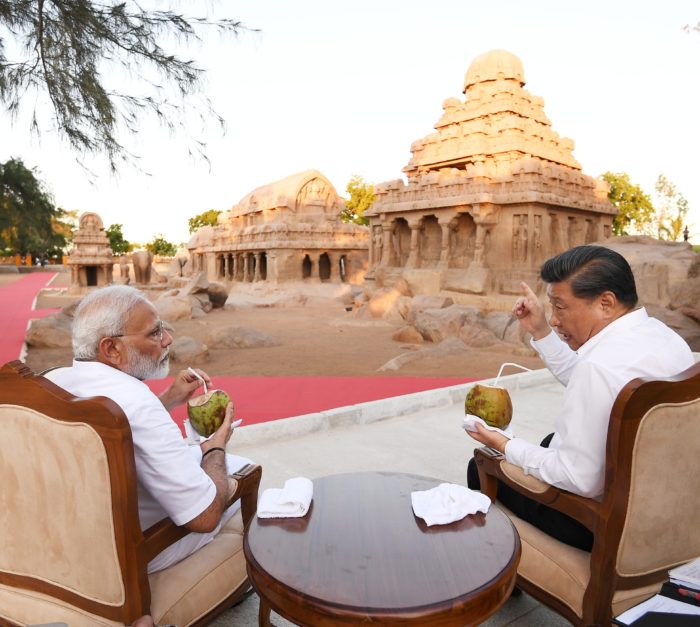ช่วงนี้กำลังอ่านบทความเรื่องกระแส Nationalism ที่กำลังฟื้นกลับมาใหม่ (ได้สักพักละ) มาเจอบทความนี้ใน Nikkei น่าสนใจ พูดถึงเคสของจีนและอินเดียพอดี
ใจความหลักของบทความคือ รัฐบาลจีนและอินเดียกำลังเล่นบท “แข็งกร้าว” กับชนกลุ่มน้อย (ในที่นี้คือ ซินเจียง และ แคชเมียร์ ซึ่งเป็นอิสลามทั้งคู่) เพื่อสร้าง “ชาตินิยมใหม่” ให้ตัวเองกลายเป็นชาติที่แข็งแกร่งในเวทีโลก
both cases also reveal the importance Indian and Chinese leaders now place on developing a more powerful state structure and unified identity as part of their emergence as global powers.
กรณีของจีนค่อนข้างชัดเจน จากการขึ้นมาเรืองอำนาจของสีจิ้นผิง ที่มีนโยบาย Belt & Road หรือ Chinese Dream รวมถึงท่าทีต่อการประท้วงซินเจียงหรือฮ่องกง (รวมถึงไต้หวัน) ก็ชัดเจนมาก แต่กรณีของอินเดีย อาจไม่เป็นข่าวในระดับโลกมากเท่า แต่รัฐบาลของ Modi ก็เป็นชาตินิยมฮินดูที่แข็งแรงเช่นกัน (ตัวอย่างที่คนคุ้นหน่อยก็อย่างเช่น การสั่งยกเลิกแบงค์ 1,000 รูปีแบบฉับพลัน)
หากใช้ทฤษฎีรัฐศาสตร์มาจับ การสร้างชาติให้เป็นปึกแผ่นลักษณะนี้ ถือว่ามีความจำเป็นในทางประวัติศาสตร์ และประเทศตะวันตกก็ผ่านกระบวนการนี้มาแล้ว
The U.S. went through its own process of national completion in the 19th century, treating its minority Native American population abysmally along the way. Much the same was true in Europe during the late 18th and early 19th centuries.
อีกประเด็นที่น่าสนใจคือ การรวบอำนาจแบบนี้จะแก้ “ข้อยกเว้นบางอย่าง” ในรัฐธรรมนูญ (เช่น กรณีแคชเมียร์) ให้ทั้งประเทศอยู่ในมาตรฐานเดียวกัน
As well as nation-building, this involves “state-building” too, meaning the construction of a unified and effective national government, in which military power is expanded, a single national market is created, constitutional anomalies are tidied up and state power is allowed to operate throughout a given territory.
ประเด็นเรื่องการพัฒนาเชิงเศรษฐกิจ-เทคโนโลยี ที่เอื้อให้รัฐบาลกลางสามารถ “กระชับอำนาจ” ได้มีประสิทธิภาพมากขึ้น ก็น่าสนใจเช่นกัน กรณีของจีนชัดเจนมากในการใช้เทคโนโลยีช่วยปกครอง
As Asia grows more developed, so the capacities of its governments increase too, giving them more power over restive provinces or to promote uniform identities. China’s high-tech nationalism, where 100 million users now log in to the Communist Party’s “Study Xi, Strong Nation” propaganda app, is merely a particularly advanced example of the type.
กระแสชาตินิยมใหม่น่าจะมีแนวโน้มอยู่ต่อไปอีกนาน ตรงนี้อาจต่างไปจากกรณียุโรป (ที่กลายเป็น “ภูมิภาคนิยม”) แต่ในเอเชีย ประเทศในภูมิภาคมีความแตกต่าง-แตกแยกกันสูงมาก น่าจะเห็นได้ยากกว่ากันเยอะ
many believed that an era of rapid globalization would lead to declines in the power of nation states. This may even end up being true in some western economies. But in Asia, most nation-states will grow more powerful over the coming decades, not less.
ภาพประกอบจากทวิตเตอร์ Modi นั่งกินน้ำมะพร้าวกันดูชิลล์ดี
President Xi Jinping and I saw the marvellous Pancha Rathas.
The five Rathas are examples of monolith rock-cut architecture. The Rathas in this monument include the Dharmaraja Ratha, Bhima Ratha, Arjuna Ratha, Nakula Sahadeva Ratha and Draupadi Ratha. pic.twitter.com/s5xQARmQfC
— Narendra Modi (@narendramodi) October 11, 2019

